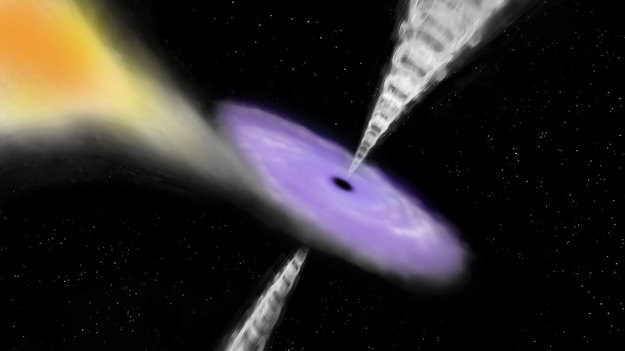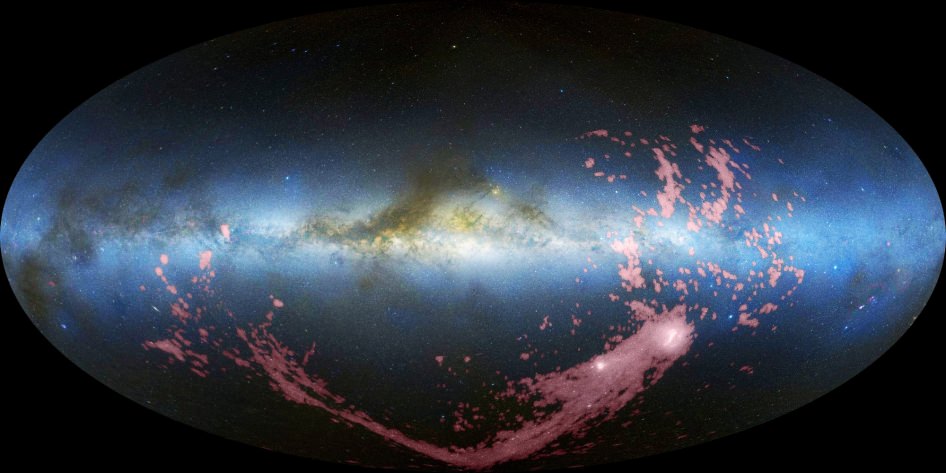If you’re into astronomy, or just a fan of any science fiction franchise worth its salt, then chances are you’ve heard the term parsec thrown around. But what is a parsec exactly? Basically, it’s a unit of length used to measure the astronomically large distances between objects beyond our Solar System.
Astronomy Cast 322: SOHO
As we’ve mentioned before, the Sun is a terrifying ball of plasma. It’s a good thing we’re keeping an eye on it. And that eye is the Solar and Heliospheric Observatory, or SOHO. Operating for more than 18 years now, SOHO has been making detailed observations of the Sun’s activity though an almost entire solar cycle. With so many years of operation, SOHO has some amazing stories to tell.
A Guided Aerial Tour of Curiosity’s Journey So Far on Mars

Just where has the Curiosity rover traveled so far and where is it going? This new video, narrated by John Grotzinger, the principal investigator for the Mars Science Laboratory mission, provides an aerial tour of the rover’s past, present and future traverses on the Red Planet.
Curosity landed in a flat, “hummocky” area in Gale Crater and is heading towards the Aeolis Mons, also known as Mount Sharp, a mountain 5 kilometers (3 miles) high. Right now the rover is among a cluster of small, steep-sided knobs, or buttes that are quite large — up to about the size of a football field and the height of a goal post. They sit in a gap in a band of dark sand dunes that lie at the foot of the mountain. Deep sand could present a hazard for driving, so this break in the dunes is the access path to the mountain.
These buttes have been named the Murray Buttes in honor of influential planetary scientist Bruce Murray (1931-2013).
“Bruce Murray contributed both scientific insight and leadership that laid the groundwork for interplanetary missions such as robotic missions to Mars, including the Mars rovers, part of America’s inspirational accomplishments,” said NASA Mars Exploration Program Manager Fuk Li from JPL. “It is fitting that the rover teams have chosen his name for significant landmarks on their expeditions.”
Meanwhile at Endeavour Crater, where the Opportunity is still exploring, nearly a decade on, and is now preparing for winter. A feature there has also been named for Bruce Murray, Murray Ridge, part of an uplifted crater rim.
“Murray Ridge is the highest hill we’ve ever tried to climb with Opportunity,” said the mission’s principal investigator, Steve Squyres of Cornell University, Ithaca, N.Y. The ridge has outcrops with clay minerals detected from orbit. It also provides a favorable slope for Martian winter sunshine to hit the rover’s solar panels, an advantage for keeping Opportunity mobile through the winter.
“Bruce Murray is best known for having been the director of JPL, and JPL is where our rovers were built,” Squyres said. “He led JPL during a time when the planetary exploration budget was under pressure and the future for planetary missions was not clear. His leadership brought us through that period with a strong exploration program. He was also a towering figure in Mars research. His papers are still cited abundantly today.”
Back to the video, interestingly, the “fly-through” data comes from a variety of missions representing some of the history of Mars exploration. Doug Ellison, who works with JPL’s Eyes on the Solar System – which uses spacecraft data to create realistic simulated views of spacecraft, planets and other features within our solar system – said on Twitter that the video uses data from Viking to narrow down the color, Mars Express High Resolution Stereo Camera (MEX-HRSC_ and the Mars Reconnassaince Oribiter’s HiRISE camera for topography, and the MRO Context camera (MRO-CTX) and HiRISE for imagery.
Source: JPL
Delving Into The Mystery Of Black Hole Jets
The concept of a black hole jet isn’t a new one, but we still have a lot to learn about the mixture of particles found in the vicinity of them. Through the use of ESA’s XMM-Newton Observatory, astronomers have been taking a look at a black hole in our galaxy and found some surprising results.
As we know, stellar mass black holes take on materials from nearby stars. Matter from these companion stars is pulled away from the parent body toward the black hole and radiates a temperture so intense that it emits X-rays. However, a black hole doesn’t always ingest everything that comes its way. Sometimes they reject small portions of this incoming mass, pushing it away in the form of a set of powerful jets. These jets also feed the surroundings, releasing both mass and energy… robbing the black hole of fuel.
Through the study of jet composition, researchers are able to better determine what gets taken into a black hole and what doesn’t. Through observations taken at the radio wavelength of the electromagnetic spectrum, we have seen electrons crusing along at nearly the speed of light. However, it hasn’t been clearly determined whether the negative charge of the electrons is complemented by their anti-particles, positrons, or rather by heavier positively-charged particles in the jets, like protons or atomic nuclei.” With XMM-Newton’s power behind them, astronomers have had the opportunity to examine a black hole binary system called 4U1630–47 – a candidate known to have unexpected outbursts of X-rays for segments of time which last between months and years.
“In our observations, we found signs of highly ionised nuclei of two heavy elements, iron and nickel,” says María Díaz Trigo of the European Southern Observatory in Munich, Germany, lead author of the paper published in the journal Nature. “The discovery came as a surprise – and a good one, since it shows beyond doubt that the composition of black hole jets is much richer than just electrons.”
During September 2012, a team of astronomers headed up by Dr. Díaz Trigo and collaborators, observed 4U1630–47 with XMM-Newton. They also backed up their observations with near-simultaneous radio observations taken from the Australia Telescope Compact Array. Even though the studies were done close to each other – within just a couple of weeks – the results couldn’t have been more different.
According to Trigo’s team, the initial set of observations picked up X-ray signatures from the accretion disc, but there was no activity in the radio band. This is an indicator that the jets weren’t active at that time. However, in the second set of observations, there was activity in both X-ray and radio… the jets had turned back on! While examining the X-ray data from the second set, they also found iron nuclei in motion. These particles were moving both toward and away from XMM-Newton – proof the ions were part of twin jets aimed in opposite directions. However, that’s not all. There was also evidence of nickel nuclei pointing toward the observatory.
“From these ‘fingerprints’ of iron and nickel, we could show that the speed of the jet is very high, about two-thirds of the speed of light,” says co-author James Miller-Jones from the Curtin University node of the International Centre for Radio Astronomy Research in Perth, Australia.
“Moreover, the presence of heavy atomic nuclei in black hole jets means that mass and energy are being carried away from the black hole in much larger amounts than we previously thought, which may have an impact on the mechanism and rate by which the black hole accretes matter,” adds co-author Simone Migliari from the University of Barcelona, Spain.
Astounding new findings? Well… yeah. For a typical stellar-mass black hole, this is the first time that heavy nuclei has been detected within the jets. As of the present, there is only “one other X-ray binary that shows similar signatures from atomic nuclei in its jets – a source known as SS 433. This black hole system, however, is characterised by an unusually high accretion rate, which makes it difficult to compare its properties to those of more ordinary black holes.” Through these new observations of 4U1630–47, astronomers will be able to fill in information gaps about what causes jets to occur in black hole accretion disks and what drives them.
“While we now know a great deal about black holes and what happens around them, the formation of jets is still a big puzzle, so this observation is a major step forward in understanding this fascinating phenomenon,” says Norbert Schartel, ESA’s XMM-Newton Project Scientist.
Original Story Source: ESA Press Release.
Moon’s Blotchy Near Side Has Bigger Craters Than Expected

The familiar blotches that make up “the man in the moon”, from the vantage point of Earth, happened because the moon’s crust is thinner on the near side than the far side to our planet, new research reveals.
The twin GRAIL spacecraft provided the most accurate sizes yet of lunar impact craters on the moon, providing more insight into what happened when Earth’s closest large neighbor was hammered with meteorites over billions of years.
“Since time immemorial, humanity has looked up and wondered what made the man in the moon,” stated Maria Zuber, GRAIL principal investigator from the Massachusetts Institute of Technology in Cambridge.
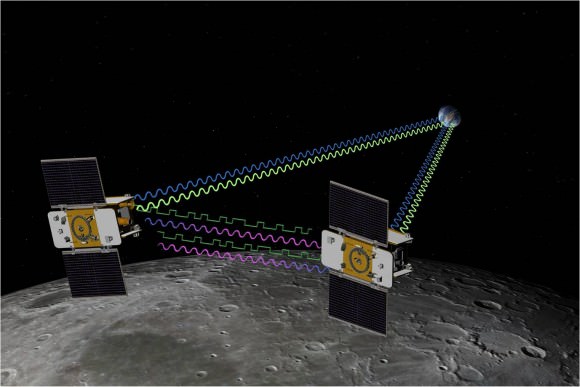
“We know the dark splotches are large, lava-filled, impact basins that were created by asteroid impacts about four billion years ago. GRAIL data indicate that both the near side and the far side of the moon were bombarded by similarly large impactors, but they reacted to them much differently.”
The moon’s near side is easily visible in a telescope, but it’s hard to measure the size of the impacts because lava is obscuring their dimensions. The GRAIL spacecraft, however, peered at the internal structure of the moon and also produced information showing how thick the crust is. This showed that there are more, bigger craters on the closer side of the moon to us than the further side.

“Impact simulations indicate that impacts into a hot, thin crust representative of the early moon’s near-side hemisphere would have produced basins with as much as twice the diameter as similar impacts into cooler crust, which is indicative of early conditions on the moon’s far-side hemisphere,” stated lead author Katarina Miljkovic of the Paris Institute of Earth Physics (Institut de Physique du Globe de Paris).
As is common with research projects, learning more about the moon is revealing a new mystery that needs to be examined. It’s commonly cited that the moon was walloped during something called the late heavy bombardment, a period four billion years ago when it was believed that more meteorites impacted the moon.
“The late heavy bombardment is based largely on the ages of large near-side impact basins that are either within, or adjacent to the dark, lava-filled basins, or lunar maria, named Oceanus Procellarum and Mare Imbrium,” NASA stated.
“However, the special composition of the material on and below the surface of the near side implies that the temperatures beneath this region were not representative of the moon as a whole at the time of the late heavy bombardment. The difference in the temperature profiles would have caused scientists to overestimate the magnitude of the basin-forming impact bombardment.”
A research paper on the topic recently appeared in Science. GRAIL successfully concluded its mission last year after nine months of operations, flying into the side of a mountain as planned.
Source: NASA
‘Super-Typhoon’ Haiyan Looms Large In Space Station Video

The scary extent of Typhoon Haiyan, which devastated the Philippines, is apparent in this shot from the International Space Station. From the orbital perch about 250 miles (400 kilometers) above Earth, the estimated Category 5 typhoon fills most of the view. On the ground, wind speeds reached as high as 235 miles an hour (378 kph), reports say.
NASA and others are saying that the storm is likely the biggest one on record to make landfall. As of this morning, the official death count from a Philippines disaster agency is 2,275, but it will be a while before numbers become more clear. Initial estimates of the death toll ranged as high as 10,000, but in media reports from this morning, Philippines president Benigno Aquino III estimated deaths would be between 2,000 and 2,500.
Meanwhile, the United Nations is asking for $301 million to assist the estimated 11 million people who were affected by the storm, including more than 670,000 who have fled from their homes to escape the powerful surge. Assistance agencies are struggling to get people the help they need.
“There are still many places that are not accessible yet,” Elizabeth Byrs, a spokeswoman for the World Food Program said in Geneva, said in a New York Times report. The WFP plans to charter boats to send more supplies, she added.
More views from orbit are visible in this past Universe Today story by Ken Kremer.
Gorgeous Telescope Timelapse Makes You Feel Like You’re Standing In Chile
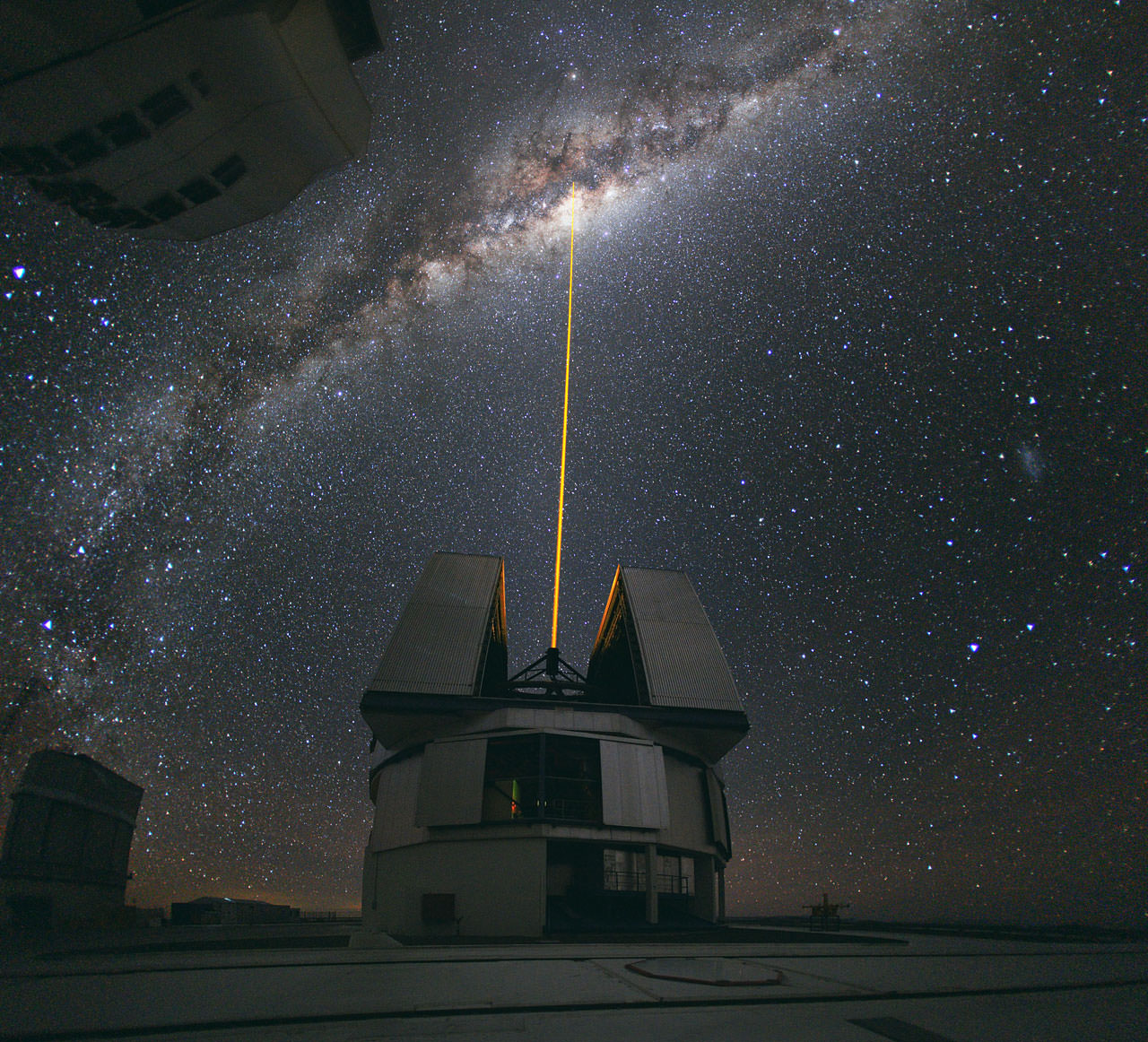
As the chill of winter settles into the northern hemisphere, fantasies of down-south travel pervade a lot of people’s dreams. Well, here’s a virtual journey to warm climes for astronomy buffs: a beautiful, music-filled timelapse of several European Southern Observatory telescopes gazing at the heavens in Chile.
Uploaded in 2011 (but promoted this morning on ESO’s Twitter feed), the timelapse was taken by astrophotographers Stéphane Guisard (also an ESO engineer) and José Francisco Salgado (who is also an astronomer at Chicago’s Adler Planetarium.) Telescopes include:
- The Very Large Telescope (in Paranal)
- The just-finished Atacama Large Millimeter/submillimeter Array (ALMA), in Chajnantor
- The future site of the European Extremely Large Telescope (E-ELT) in Armazones, which is supposed to be ready sometime in the next decade.
We’ve covered their work before on Universe Today. In 2009, Guisard participated in GigaGalaxy Zoom, which produced a 360-degree panorama of the entire sky. He also released a 3-D view of several telescopes that same year. Also, Guisard and Salgado collaborated on another 2011 timelapse of the Very Large Telescope and nearby sites.
Sgr A* Could Be a Relic of a Powerful AGN
The early universe was sizzling with active galactic nuclei (AGN) — intensely luminous cores powered by supermassive black holes — most of which could outshine their entire host galaxies and be seen across the observable universe.
While our central supermassive black hole Sgr A* lies rather dormant at the moment, new evidence suggests that it too was once a powerful AGN.
The first hint occurred two years ago when astronomers discovered Fermi bubbles — massive lobes of high-energy radiation that expand 30,000 light years north and south of the galactic center.
Of course the source of these bubbles is “a hot topic today,” Dr. Joss Hawthorn from the Sydney Institute for Astronomy and lead author on the paper, told Universe Today. “Some think the bubbles were inflated by powerful star formation in the disk, others, like me, (think) that they were inflated by a powerful jet from Sgr A*.”
It’s becoming more and more plausible that the Fermi bubbles were created by a recently powerful jet protruding from the center of our galaxy — demonstrating they are remnants of a much more violent past.
But astronomers from the Sydney Institute for Astronomy in Australia, the University of Colorado, Boulder, and the University of Cambridge have found further evidence linking Sgr A* to a recent AGN.
The Magellanic Stream — a long ribbon of gas stretching nearly half way around the Milky Way and trailing our galaxy’s two small companion galaxies, the Magellanic Clouds — is likely to be another ancient remnant of our recent activity.
The problem is that the Magellanic Stream is extremely red. It is emitting a large number of photons that clock in at a particular wavelength: 656 nanometers. This wavelength not only falls in the visible spectrum, but corresponds to a red color.
The Magellanic Stream is emitting so much red light because it contains extremely energetic hydrogen atoms. When atoms have high-energy electrons, these electrons lose energy by emitting photons.
But astronomers cannot explain why the Magellanic Stream has so many energetic hydrogen atoms, why it is such a bright red color — unless they invoke recent AGN activity from the Milky Way galaxy.
If we assume Sgr A* was once very bright, it would have lit up the Magellanic Stream, causing hydrogen atoms to absorb energy from the incoming light — an effect still visible millions of years later.
A huge outburst of energy in our recent past is likely the cause of a Seyfert flare — an eruption of light and radiation when small clouds of gas fall onto the hot disk of matter that swirls around the black hole.
“If you hurl a bucket of water into a sink, you would be shocked if it all disappeared down the plug hole. Of course, the water spins around the plughole first. (The) same thing (occurs) with gas falling onto a black hole. the spinning disk heats up and generates powerful outbursts: Seyfert flares,” Dr. Hawthorn explained.
This provides further evidence that Sgr A* was once a very powerful AGN, causing Fermi bubbles and a brighter Magellanic Stream. It’s likely it was active as recent as one to three million years ago.
The paper has been published in the Astrophysical Journal and is available for download here.
New Timelapse of Comets ISON and Lovejoy
Comet 2012 S1 (ISON) is just 16 days away from its close encounter with the Sun and is now inside the orbit of Venus, at under 103,000,000 km (64,000,000 miles) away from the Sun. This new timelapse by award-winning photographer Justin Ng from Singapore shows the journey of both ISON and Comet 2013 R1 (Lovejoy), taken on November 11, 2013. The video covers 50 minutes of imaging time for ISON and 90 minutes of imaging time for Lovejoy.
As you watch the video of each, don’t worry – the comets and their tails are not fizzling out! This actually reflects the reduced visibility of the comets as the sky was gradually becoming brighter with daybreak. Additionally, Justin cautions that in the timelapse, both comets appear to be moving especially fast because of smaller field of view and long exposure.
On November 4, there were indications of a possible ion tail emerging from Comet ISON, and this comet’s growing dust tail now stretches to more than a full moon’s diameter. “Comet ISON is now plunging towards the Sun with 2 long tails at a magnitude of around +7 and it is visible in small scopes and strong binoculars,” writes Justin.
Comet ISON flies in front of constellation Virgo this week (from our vantage point on Earth) and it is expected to grow some 2.5 times brighter before it passes by the bright star Spica in Virgo on November 17 and 18.
“Comet Lovejoy just passed into the constellation Leo with a magnitude of around +6 and it’s an easy binocular object,” said Justin. “R1 Lovejoy will remain well placed at 50 to 60 degrees above the northeastern horizon before sunrise through this week for observers from near the Equator.”
Keep tabs on Justin’s work on his website , G+ page, and Facebook.
Keep tabs on the latest on Comet ISON at the Comet ISON Observing Campaign website.
Timelapse of Comet ISON and Comet Lovejoy from Justin Ng Photo on Vimeo.
Two Workers Killed at Russian Launch Facility
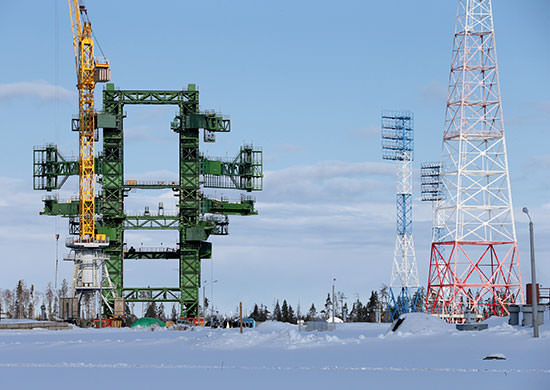
Reports coming out of Russia say that two people were killed at the Plesetsk space launch facility last week while doing routine work cleaning out a propellant tank. The Russian newspaper Ria Novosti said that on November 9, 2013, two workers were killed and three others were hospitalized after being exposed to poisonous nitrogen vapors while doing maintenance at the facility. Officials from the Russia Defense Ministry were quoted as saying the accident appeared to have been caused by failure to follow safety regulations.
The Plesetsk cosmodrome is located in the northwestern Arkhangelsk province. The facility has been undergoing refurbishing to take over a majority of the launches as Russia looks to reduce reliance on the Baikonur cosmodrome, which it leases from the former Soviet nation of Kazakhstan.
Currently, Russia uses Plesetsk to test intercontinental ballistic missile and to launch satellites, but they are hoping to use new facilities by next year to test the Angara heavy rocket.
Ria Novosti said it was unclear what accounted for the delay between the incident and its announcement, “but sensitive military issues are typically kept highly confidential in Russia.”
Unfortunately, over 50 people have been killed at this launch facility since 1973. In June of 1973, 9 people were killed by an explosion of Cosmos-3M rocket; in March of 1980, 48 people were killed by an explosion of a Vostok-2M rocket with a Tselina satellite, during a fueling operation; and in October of 2002, a Soyuz-U carrying the ESA Foton-M1 project failed to launch and exploded, killing one.
Right now, just one-fourth of Russia’s launches occur from within Russia itself, but Russia’s Federal Space Agency hope to have nine-tenths of its space launches from Plesetsk and the Vostochny cosmodrome by 2030.
Sources: Ria Novosti, Russian Space Web

